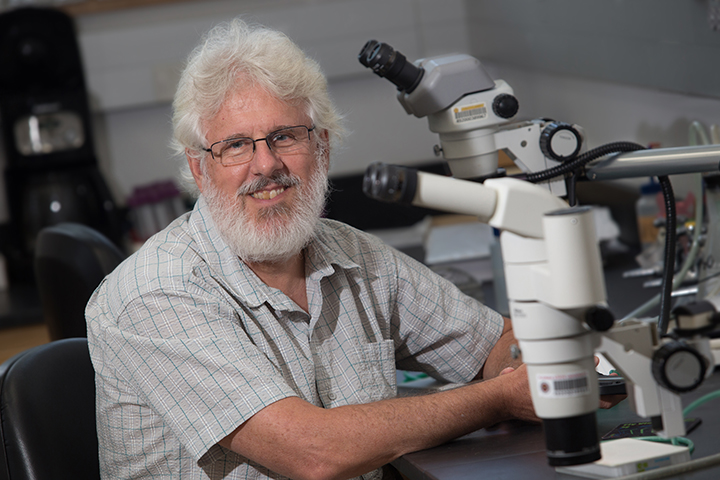
Small, seemingly insignificant mutations in fruit flies may actually hold clues as to how a species will evolve tens of millions of years in the future.
That’s the focus of a new study by a Florida State University researcher who raised 200 generations of fruit flies to examine how they changed both in the short and long term. What he found was quite surprising.
Small mutations in the wing of fruit flies — the drosophilids — predict up to 40 million years of evolution for this common household pest. The research was published today in the journal Nature.
“The main point is mutation that’s happening now affects long-term evolution,” said Professor of Biological Science David Houle. “How this happens is not clear. Some scientists believe that the supply of mutation is what guides evolution. Others have suggested that the same processes that shape long-term evolution also shape mutation.”
Houle set out to investigate if there were parts of the fruit fly that couldn’t mutate or evolve and how quickly other parts did so.
“We wanted to see how the effects that mutation produces are related to evolution,” Houle said. “We were surprised that there was a very tight relationship.”
Fruit flies are considered an ideal species for scientists to investigate unsolved problems in evolution and genetics because it is easy to breed more than 20 generations each year. Their wings are also easy to measure, so scientists can easily identify even small changes.
“It’s a convenient system to investigate complex parts of an organism,” Houle said. “I’ve always been interested in evolutionary process, what’s going on and what’s limiting it. It’s the nuts and bolts.”
By examining fossil evidence and conducting DNA sequencing, Houle and his colleagues knew that fruit flies had been around for roughly 40 million years. They also suspected that the pattern of mutation could have remained constant over that time period.
“It is often true that some things evolve very slowly, and it’s reasonable to conclude that mutational patterns may be one of those things,” he said. “The important thing is that the pattern of past evolution did not necessarily have to be similar to mutation. We were surprised at how similar they are.”
To measure the rate of mutation and evolution, Houle and co-author Kim van der Linde of the Tallahassee-based Animal Genetics Inc. gathered almost 120 different species of flies by collecting them from nature or obtaining them from other scientists. Van der Linde studied how these flies were related to each other.
Houle then raised 200 generations of fruit flies — it takes four years to breed that many generations — and then individually raised some of the flies to see what, if any, changes occurred in the wings of the flies. In total, the researchers measured more than 50,000 fly wings in the course of this study and found changes in the overall shape of the wing, such as the ratio of width to length and vein locations.
Some types of changes evolved at a higher rate than others, such as the ratio of wing width and length. These evolutionary changes were also the most common mutational changes.
Through these observations and sophisticated statistical modeling, Houle and his team were able to determine that the small mutational changes occurred in the same pattern as evolution throughout the entire group of fly species.
The findings are likely applicable to how other plants and animal species evolved, Houle said. But they also are predictive of the next 40 million years of evolution as well, he added.
“What we are doing is more accurately known as a retroduction — using something from the present to predict past events,” Houle said. “Of course, we can now make a prediction that Drosophila will evolve in this pattern in the future, as well.”
This work was funded by the National Science Foundation.
Other authors on the paper are Thomas Hansen of the University of Oslo, Norway, and Geir Bolstad of the Norwegian Institute for Nature Research. Hansen is a former member of the FSU faculty, and Bolstad was a postdoctoral researcher at Florida State in 2013.



